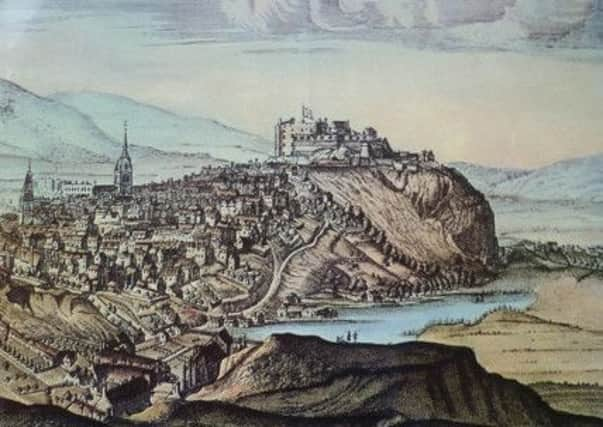Lost Edinburgh: The Nor’ Loch


The origins of the Nor’ Loch
The precise origins of the Nor’ Loch are much contested. There is evidence to suggest that a large body of water existed in the valley to the north of the Castle Rock as far back as 15,000 years ago – the deep valley being a product of the last ice age.
However, at some point it appears the loch must have receded or vanished entirely, as there is no firm mention of it until the late 14th century, at which time the town of Edinburgh had already been in existence for several hundred years.
Advertisement
Hide AdTherefore, the most widely-accepted belief is that the loch was man-made. Evidence suggests that it was created on the orders of King James II, around the middle of the 15th century, in order to bolster the town’s defences from the ever-present threat of invasion.
Whatever the case, the loch, which extended from the Castle Rock down to the line of present-day Market Street, would certainly have provided the inhabitants of Edinburgh with added protection during the late Middle Ages.
Dumping ground
Over the course of its 600-year history, the Nor’ Loch performed various functions. Most notably, it was a place where Edinburgh’s growing population dumped its waste. All manner of effluent imaginable, including waste matter from the town’s many slaughterhouses, is said to have met with the loch’s stagnant waters.
The Nor’ Loch was effectively a large open cesspit and its stench must have been overpowering. Contrary to claims by contemporary tour guides and those keen to embellish for the sake of a good tale, it is therefore unlikely that the foul-smelling Nor’ Loch ever served as the town’s main drinking supply.
A place of death
As well as being the city’s most popular suicide spot and the scene of numerous violent murders, the banks of the Nor’ Loch were frequently used as a place where brutal punishments were carried out.
Executions and public ‘dookings’ were commonplace, with huge crowds gathering to witness the event. One of the more gruesome tales involved a Mr Sinclair and his two sisters who were sentenced to death for incest in 1628.
Advertisement
Hide AdThe story goes that the accused were locked in a chest with holes drilled in it and dumped in the loch. Two centuries later in the spring of 1820, when workers were busy digging a drain during the creation of West Princes Street Gardens, a large box containing the remains of three people was discovered deeply embedded in the mud.
Witch trials
Prior to the Scottish Enlightenment, it is estimated that more than 300 men and women were sentenced to be tried for wizardry and witchcraft either in the Nor’ Loch itself or around its banks. The process was barbaric with victims being tied up thumb-to-toe, dragged down the muddy slope towards the loch and thrown into the water like rats.
Advertisement
Hide AdIf they sank and perished then they were declared free of evil spirits, but if they ‘defied all sense’ by floating, then a swift burning at the stake, designed to emancipate their souls from the clutches of the devil, soon followed. Death was guaranteed either way.
Demise
Calls to rid Edinburgh of its dreaded Nor’ Loch were first initiated by the city’s burgeoning upper classes in the early 18th century. By 1764, it was reported that the loch was ‘in good measure drained’ at its eastern edge - due in part to a new construction project which was now well under way.
Work had begun on the North Bridge to connect the New Town with the old and a dry valley was desired so that the construction of the bridge’s piers could be more easily undertaken. Progress to drain the water to the west was slow, with marshland reported between the Mound and modern-day Lothian Road as recently as 1817, but by the mid 19th century all remnants of the ancient lake had vanished for good.
Princes Street Gardens, developed in stages from east to west between 1830-1876, now occupies the former Nor’ Loch valley.
The gardens provide a convenient and peaceful refuge away from the manic hustle and bustle of 21st century central Edinburgh, ensuring that the location of the old Nor’ Loch will forever play an important role in the heart of Scotland’s capital.
• Get all the latest from Lost on Edinburgh on their Facebook page, or follow them on Twitter @lostedinburgh